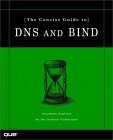
Secret Key Transaction Authentication for DNS (TSIG)
Protocol was developed to provide a lightweight authentication and
Integrity of messages between two DNS entities, such as client and
Server or server and server
TSIG record is sent without a secure key that code is executed which does not check the bounds of the data before storing it into a variable
“So don’t get in a pickle”
TSIG 'variables' RFC 2845
TSIG RR--- NAME Key name, in canonical wire format text
TSIG RR--- CLASS (Always ANY in the current specification)
TSIG RR--- TTL (Always 0 in the current specification)
TSIG RR RDLEN---
TSIG RDATA MAC---
TSIG RDATA--- Algorithm Name in canonical wire format strings encoded . using the syntax
TSIG RDATA--- Time Signed in network byte order
TSIG RDATA--- Fudge in network byte order 300
TSIG RDATA--- Error in network byte order 0 (NOERROR)
TSIG RDATA--- Other Len in network byte order 0
TSIG RDATA--- Other Data exactly as transmitted
Now read about Language: Python
















No comments:
Post a Comment